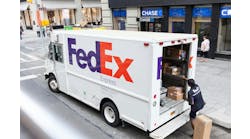Total U.S. logistics costs dropped in 2009, reflecting the effects of the recession and showing a significant decrease from 2008, according to the 21st State of Logistics Report, an annual report released by the Council of Supply Chain Management Professionals (CSCMP). Business logistics costs fell to 7.7% of U.S. Gross Domestic Product (GDP) in 2009, as compared to 9.3% the previous year.
Interest rates remained historically low, and this, combined with lower inventory levels, pushed the interest paid on inventories down over 89% from 2008 levels.
The State of Logistics Report tracks and measures all costs associated with moving goods through the U.S. supply chain. The report benchmarks key metrics in U.S. logistics such as transportation and inventory-carrying costs, freight volumes, and revenues, offering a "big-picture view" of the performance of the U.S. supply chain process.
In 2009, inventory-carrying costs continued to fall due to a 4.6% decline in inventory and a further plunge in interest rates. Pressure on rates and an inability to move goods resulted in warehousing costs falling 2%below those of 2008. Although early 2009 saw warehouses full of inventory, by mid-year goods had been drawn down or relocated, leaving facilities with empty space.
Transportation costs were 20.2% lower than 2008 levels, with all modes of transportation being negatively affected. Trucking, which comprises a large percentage of the transportation component, had a 9% drop in tonnage carried. Rail carload traffic was also down from the previous year. The ocean sector reported sharp declines, lowering rates to stimulate business, with some ocean carriers reporting losses for the first time in their company’s histories. After heavy losses early in the year, air cargo had a much stronger showing by the latter part of 2009.
Due to abundant capacity and decreased freight to move, the industry has experienced significant pressure to reduce costs. Although shippers have responded with reductions, customers have not necessarily noticed a decline in rates. Overall, indicators show improvements in the fourth quarter with a focus on future direction.
"Logistics providers were among the first to feel the effects of the economic downturn, " says Vince Hartnett, president, Penske Logistics, a third-party logistics provider (3PL). “Today, we are seeing some positive signs of recovery in the supply chain with increasing truck freight volumes and higher truck fleet utilization rates. If this continues, trucking and logistics firms will likely add capacity to take on additional loads and hire drivers to meet increasing demand.
"Anecdotally, we are also seeing more Fortune 1000 level companies evaluating logistics outsourcing compared with the previous 12-month period, " Hartnett continues. "This tells us that business leaders are looking to capture emerging growth opportunities while still staying focused on cash and capital—a good combination for our industry and a steady recovery. "
The report is authored by Rosalyn Wilson, a transportation consultant for Delcan Corp.


